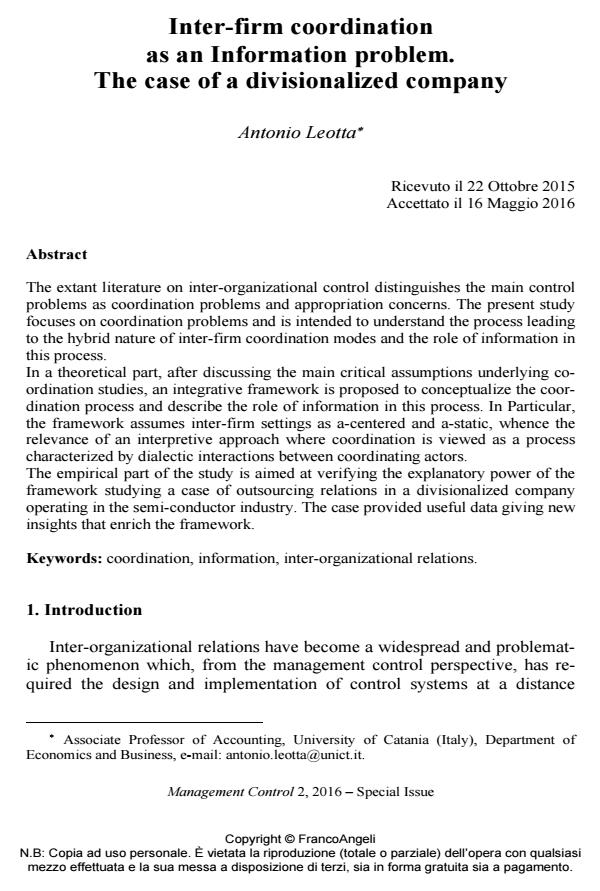Inter-firm coordination as an Information problem. The case of a divisionalized company
Journal title MANAGEMENT CONTROL
Author/s Antonio Leotta
Publishing Year 2016 Issue 2016/2
Language Italian Pages 22 P. 167-188 File size 264 KB
DOI 10.3280/MACO2016-002008
DOI is like a bar code for intellectual property: to have more infomation
click here
Below, you can see the article first page
If you want to buy this article in PDF format, you can do it, following the instructions to buy download credits

FrancoAngeli is member of Publishers International Linking Association, Inc (PILA), a not-for-profit association which run the CrossRef service enabling links to and from online scholarly content.
The extant literature on inter-organizational control distinguishes the main control problems as coordination problems and appropriation concerns. The present study focuses on coordination problems and is intended to understand the process leading to the hybrid nature of inter-firm coordination modes and the role of information in this process. In a theoretical part, after discussing the main critical assumptions underlying coordination studies, an integrative framework is proposed to conceptualize the coordination process and describe the role of information in this process. In Particular, the framework assumes inter-firm settings as a-centered and a-static, whence the relevance of an interpretive approach where coordination is viewed as a process characterized by dialectic interactions between coordinating actors. The empirical part of the study is aimed at verifying the explanatory power of the framework studying a case of outsourcing relations in a divisionalized company operating in the semi-conductor industry. The case provided useful data giving new insights that enrich the framework.
Keywords: Coordination, information, inter-organizational relations.
Antonio Leotta, Inter-firm coordination as an Information problem. The case of a divisionalized company in "MANAGEMENT CONTROL" 2/2016, pp 167-188, DOI: 10.3280/MACO2016-002008